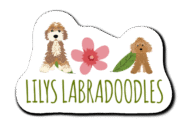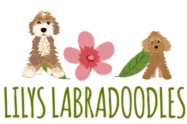Puppy Training
Why Do Puppies Bite?
Puppies explore the world with their mouths much like human babies do with their hands. Your puppy has just left its litter, where communication with its mother and siblings involved mouthing and gentle biting. This behavior is natural and instinctive—often linked to teething and playfulness.
It’s important to understand that biting is a normal part of development and typically improves as your puppy matures. Teaching what is acceptable to bite and what is not is a crucial part of training, especially as your puppy grows larger and stronger.
Methods for Teaching Your Puppy Not to Bite
1. Establish a Consistent Training Routine
Consistency is key to all aspects of puppy training, including bite inhibition. Dogs thrive on routine, so implementing a structured and predictable training schedule helps your puppy understand what is expected of them. When all family members use the same approach, learning becomes easier and more effective.
Rather than long, irregular sessions, opt for short, frequent training times. Choose a quiet, distraction-free environment and ensure everyone is on board with the routine.
2. Use Positive Reinforcement
Teaching a verbal cue like “no bite” can be very effective. When your puppy responds appropriately—using gentle mouthing or refraining from biting—reward them with praise, treats, or affection. Positive reinforcement builds a strong association between good behavior and positive outcomes, increasing the likelihood of repetition.
3. Redirect Unwanted Biting
Even with training, your puppy may still try to nip. Redirection is a useful strategy here. When biting occurs, immediately shift your puppy’s attention to a chew toy or appropriate alternative. This teaches them what is acceptable to bite.
Puppies often chase and bite hands because they’re attracted to movement. If this happens, turn your hand into a fist to reduce stimulation and discourage further interest.
Always have a variety of chew toys nearby so you can quickly redirect biting behavior. This makes it clear what items are appropriate to chew on and what aren’t.
4. Encourage Proper Chew Toy Use
Biting isn’t something to suppress entirely—it’s about teaching your puppy what to chew. Help guide their chewing instincts toward appropriate toys.
Introducing Chew Toys
Make toys exciting by engaging with them yourself or playing with your puppy. Praise your pup when they show interest in the toy to build a positive association.
Choosing the Right Toys
Select puppy-specific toys made of soft, safe materials that are gentle on growing teeth. Avoid toys that resemble household items to prevent confusion, and prioritize durability.
5. Practice Patience and Consistency
Teaching bite inhibition takes time, repetition, and patience. Puppies are learning how to interact with the world, and progress won’t happen overnight.
When setbacks happen, stay calm and consistent. If you’re feeling frustrated, take a break and remind yourself that training is a process. Don’t hesitate to seek support from other puppy owners or professionals if needed.
6. Manage Biting in Different Settings
During Playtime
Puppies may get overexcited and bite during play. This is a natural form of communication for dogs. Set clear boundaries by pausing play immediately if biting begins.
In Social Situations
Monitor your puppy when they’re around other dogs or people. Dog interactions may look rough to us—they often include growling, barking, and biting—but it’s part of their social behavior. Understanding canine communication will help you know when to step in and when to let them work it out.
7. Seek Professional Help if Needed
If biting becomes aggressive, frequent, or shows little improvement despite your efforts, it may be time to involve a professional trainer. An experienced expert can assess your puppy’s behavior and offer tailored strategies for your situation.
Final Thoughts
Training your puppy not to bite requires patience, consistency, and a structured approach. By setting a routine, reinforcing good behavior, redirecting inappropriate biting, and encouraging chew toy use, you’re laying the foundation for a well-behaved, gentle companion.
Celebrate small wins along the way, and don’t be discouraged by setbacks. With time and effort, your puppy will learn good manners and develop a soft, friendly mouth. If challenges persist, professional help is always a great resource


